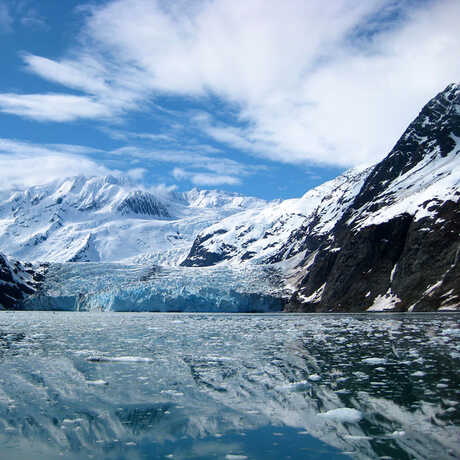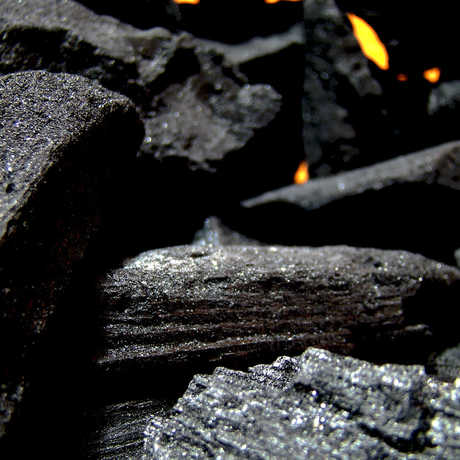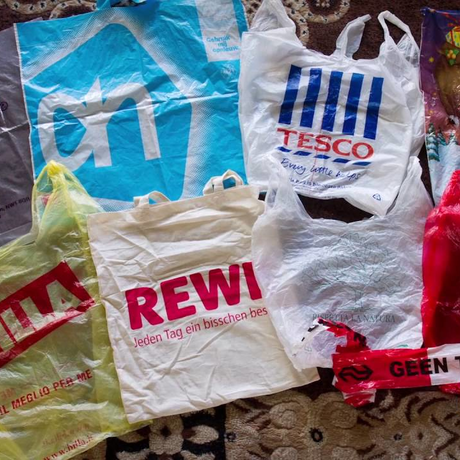
© April
The problems with using fossil fuels starts with extraction. In this activity, students "mine" chocolate chips out of cookies to demonstrate the effects mining can have on habitats.
Students will be able to:
- summarize the environmental impact of obtaining and using fossil fuels.
- recommend solutions for reducing use of fossil fuels.
- Chocolate chip cookies – relatively hard cookies work best (1 per student)
- Toothpicks (1 per student plus extras)
- Plates (1 per student)
- Cookie Mining worksheets (1 per student)
- fossil fuel: an energy-rich substance such as petroleum, coal, or natural gas formed from the remains of organisms
- coal: a dark-brown to black solid substance formed naturally from the compaction and hardening of fossilized plants and used as a fuel primarily for electricity generation
- natural gas: a mixture of hydrocarbon gases that occurs naturally beneath the earth’s surface and is used as a fuel primarily for cooking and heating homes
- renewable resource: a resource that is never used up (e.g., solar energy)
- non-renewable resource: a resource that is not replaceable after its use (e.g., coal, gas)
- Discuss where we get the majority of the energy that we use.
- How do power plants create electricity?
- What is a fossil fuel?
- What does it mean to be renewable? Are fossil fuels renewable?
- What does our society get from fossil fuel mining?
- Discuss jobs, economic benefits, and energy.
- Discuss jobs, economic benefits, and energy.
- Essential Question: How does fossil fuel mining affect the Earth and its inhabitants?
- Introduce the essential question by telling student that we will be investigating how mining for fossil fuels affects the Earth and its inhabitants.
Teacher tip: Start this activity by making sure students have washed their hands. They will have the option to eat their cookies later.
- Pass out the cookies, plates, and one Cookie Mining Worksheet for each student.
- Students will sketch their cookie in two ways and answer the questions on the “Before Mining” side of their worksheet:
- In the box on the left, students will make a sketch of their cookie.
- In the box on the right, student will draw what fictional habitat is above ground on their cookie. Tell students to imagine that the cookie is actually the bedrock and dirt below ground – the second box is a bird’s eye view of that habitat on top. They should think of this as a fairly large area – the size of a city or national park. It can be a forest, desert, mountain, or any other ecosystem they like.
- Pass out the toothpicks and explain that the students are actually coal miners. The chocolate chips in their cookies are the coal deposits underground, and they need to use their tools (toothpicks) to remove as much of that coal as possible. Give them about 5 minutes to “mine” for chocolate chips.
- After mining, students will sketch their cookie in two ways and answer the questions again, this time on the “After Mining” section of their worksheet:
- In the box on the left, they will make a sketch of their cookie.
- In the box on the right, they will compare the damage to the cookie and the “before” image of the habitat to predict what their imaginary habitat looks like now. Encourage them to be specific when drawing and writing about what damage occurred.
Teacher tip: Let your students eat their cookies during the wrap-up!
- Lead a discussion about what the land looked like before and after mining. Will it return to its original state? Why or why not?
- Discuss what implications strip mining might have on local ecosystems.
- How has the cookie changed? Will the same plants and animals be able to live there? Strip mining will destroy landscapes and wildlife habitats.
- Did the chocolate get on anything nearby? Strip mining can contaminate soil and seep into groundwater.
- Are the chocolate chips a renewable resource? No, because they will not reappear. Is coal?
- What problems might we face if we stop coal mining? How can we avoid those problems? Loss of fuel for energy, loss of jobs, loss of income.
- Revisit the essential question: How does fossil fuel mining affect the Earth and its inhabitants?
For a more comprehensive unit on fossil fuels, follow this activity with Fossil Fuels: Air Pollution and the Greenhouse Effect.
Fossil Fuels
Fossil fuels like coal, oil, and natural gas present environmental problems starting with their extraction and going all the way through to their use. They are all different in their properties and uses, but they have some similarities. Fossil fuels all come from fossilized plant or animal material and are all nonrenewable resources; they take millions of years to form and do not regenerate on the timescale of a human life. All fossil fuels go through similar processes on their path from being extracted from the ground to serving as fuels for human beings.
We use fossil fuels for most of our energy needs today. Coal, natural gas, and oil accounted for 87 percent of global primary energy consumption in 2012, and they meet 82% of U.S. energy demand (Worldwatch Institute, 2013; Institute for Energy Research, 2014).
Mining
Mining is the process of extracting coal, oil, and natural gas from the ground. Strip mining (also known as open cast, mountaintop, or surface mining) involves scraping away earth and rocks to get to coal buried near the surface (Greenpeace, 2010). This often has significant impact on the surrounding land, plants, and animals. As plants and topsoil are removed from an area, it destroys landscapes and wildlife habitats. Soil erosion follows, leading to destruction of agricultural land. As topsoil is disturbed, sediments wash into waterways, damaging fish habitats and causing changes to river channels which lead to flooding. There is an increased risk of chemical contamination of ground water when minerals in upturned earth seep into the water table, and watersheds are destroyed when disfigured land loses the water it once held.
Besides providing energy, coal mining, including strip mining, provides jobs and revenue. Coal is mined in over 50 countries, employing approximately seven million people worldwide (World Coal Association, 2015). Large mines are often the largest source of jobs and income for some communities. For example, coal mining in the Appalachians is one of the main sources of income in rural West Virginia. Over six thousand residents are employed as coal miners, and thousands more are indirectly employed because of the coal industry (National Mining Association, 2015). When we face sustainability issues, it is important to also bear in mind the economic factors at hand.
Energy Conservation
As global supplies of cheap fossil fuels steadily decline and fossil fuel related greenhouse gases accumulate in the atmosphere, energy conservation is becoming a critical topic of discussion. Climate change is an important reason for people to reduce their fossil fuel consumption via conservation, efficiency measures, and switching to renewable energy sources.
Some of these technologies include: wind energy, biomass energy, carbon capture and underground storage, methane capture and use, geothermal energy, energy-efficient buildings and solar energy. These technologies are explained in detail here.
Science and Engineering Practices
- Developing and Using Models: Develop and/or use models to describe and/or predict phenomena.
- Constructing Explanations and Designing Solutions: Use evidence to construct or support an explanation or design a solution to a problem.
Disciplinary Core Ideas
- 4-ESS3A: Energy and fuels that humans use are derived from natural sources, and their use affects the environment in multiple ways. Some resources are renewable over time, and others are not.
- 5-ESS3C: Human activities in agriculture, industry and everyday life have had major effects on land, vegetation, streams, oceans, air and even outer space.
- MS-ESS3A: Minerals, fresh water, and biosphere resources are limited, and many are not renewable or replaceable over human lifetimes.
- MS-ESS3C: Human activities have significantly altered the biosphere, sometimes damaging or destroying natural habitats and causing the extinction of other species.
- MS-ESS3C: Typically as human populations and per-capita consumption of natural resources increase, so do the negative impacts on Earth, unless the activities and technologies involved are engineered otherwise.
Cross-Cutting Concepts
- Cause and Effect: Cause and effect relationship may be used to predict phenomena in natural or designed systems.
- Systems and System Models: Models are limited in that they only represent certain aspects of the system under study.
- Stability and Change: Stability might be disturbed either by sudden events or gradual changes that accumulate over time.
Related Performance Expectations
- 4-ESS3-1: Obtain and combine information to describe that energy and fuels are derived from natural resources and that their uses affect the environment.
- MS-ESS3-4: Construct an argument supported by evidence for how increases in human population and per-capita consumption of natural resources impact Earth’s systems.
- Gonzalez, M., & Lucky, M. (2013). Fossil Fuels Dominate Primary Energy Consumption.
- Mining Impacts (2010). Retrieved on October 8, 2014.
- Fossil Fuels. (n.d.). Retrieved on October 8, 2014.
- National Mining Association. Retrieved on May 12, 2015.
- Technologies. (2014). Retrieved on November 19, 2014.
- World Coal Association. Retrieved on May 12, 2015.


